- Home
- Kevin Lucia
American Horror Cinema Page 2
American Horror Cinema Read online
Page 2
Andrew Syder agrees, dismissing the idea that postmodernism has “done” something unworthy to horror cinema, saying – like Carroll – that because of its thematic questions about the known world, the authority of knowledge, things menacing us from beyond that knowledge, horror has concerned itself with postmodern issues for decades. According to Syder:
“Both postmodern theory and the horror genre are fundamentally concerned with how we perceive and make sense of the world around us, and as such both offer comparable models for ordering the knowledge we possess about the external world.” (79)
The perception of knowledge and its relevance to the horror genre is of great interest to Syder. As stated above, he believes that our ability (or implied inability) in a horror movie to know the world around us is intimately linked with postmodernism’s proposed unreliability of our senses of perception (81). Indeed, it makes sense, then, that postmodern audiences would naturally consume or seek out narratives fleshing out questions about the world around us, haunting us with implications that not only don’t we really know anything, but we also can’t accurately anticipate the unforeseeable, and are therefore ultimately unprepared and helpless in the face of what’s to come.
But up until now, we’ve only examined the general characteristics of the postmodern horror film. In her article “Recreational Terror: Postmodern Elements of the Contemporary Horror Film” Isabel Pinedo outlines the following five specific characteristics that mark a horror film as “postmodern”: 1. a violent disruption of the everyday world; 2. a transgression and violation of boundaries; 3. validity of rationality is questioned; 4. there is no narrative closure; 5. the film produces a bounded experience of fear (20).
Pinedo states the first four traits refer to the workings of the film itself; the fifth highlights the dynamic between the film and audience (20). She does note that the first three characteristics – 1. violent disruption, 2. transgression of boundaries, 3. rationality questioned - are shared by classic horror movies, also. Because we’ve discussed those three traits already in relation to classic horror movies, instead of redefining them once again, I’ll just illustrate how they differ from the traits of classic horror.
1. violent disruption: perhaps the most easily perceived difference between classic horror and postmodern horror is the level of violence visited upon the body, and the ensuing body count at the end of a postmodern horror film. Writer Philip Brophy calls this the “act of showing the spectacle of the ruined body” (21). A characteristic of postmodern horror is a fascination with the mutilation of the body, the “creative” death, and high levels of explicit violence (21). Peter Boss follows this by claiming that “body horror” is central to the contemporary horror genre, in many cases subsuming narrative and character development, to fill “the demands of presenting the viewer with the uncompromised or privileged detail of human carnage,” and it’s often shown in an emotionally detached manner, so that – according to Boss – “what fascinates is not primarily the suffering of the victim, but his/her bodily ruination” (21). In other words, according to Boss, postmodern horror fans don’t find a sadistic enjoyment in watching people suffer, but for some reason are compelled to watch – or are frightened by – the explicit, almost surgical destruction of the body.
2. transgression of boundaries - “horror in the everyday world” has become an increasing trope of the postmodern horror film, as irrational and perverse fears penetrate deeply into very mundane, normal life routines. The semblance of quiet small town life about to be destroyed, prom nights and Halloween parties destined for ruination (Huang 96). Instead of featuring a “supernatural” evil that must be confronted and beaten by “good”, or a paradigm featuring “morally good” versus “morally bad”, postmodern horror cinema often features the collapse of family and community. Loss of identity, fragmentation of the psyche, loss of self.
In the transgression of these boundaries, nothing is as it seems in the postmodern horror movie. Characters dream within dreams, mistake hallucinations for reality, reality for hallucinations. In classical horror cinema, the cinematography itself supported very clearly marked paradigms of good/evil, normal/abnormal. Syder offers the example of how the movie camera itself enables or curtails our (character/audience’s) vision of these paradigms, and the differences between how a classic horror film and postmodern horror film manipulates and structures the visual field, implying certain ideas about how we/audience/characters perceive and understand the surrounding world (82).
For example, he cites typical camera positioning and manipulation of the visual field in early Gothic horror films which, like most horror films, questioned the boundaries of what we knew with a violation from “Outside” by a “monster”. According to Syder, many Gothic movies were shot in such a way that reinforced the concrete separations of good and evil, natural and unnatural in classic horror film (83), thereby cementing the transgressor as “evil/abnormal” and what was being transgressed as “good/normal.”
Syder speaks of the 1940’s Gothic Film, Cat People, about a young woman who may or may not be suffering from a curse that turns her into a killer panther upon sexual excitement (82). Syder proposes that the film’s suspense sequences illustrate the relationships between structures of seeing and the “unknown” in horror, clearly marking out lines of transgression. One scene in particular: a potential victim is pursued at night along a darkened sidewalk. Streetlamps along the way offer intervals of pools of light. In flight, she rushes through the dark stretches between each light spot, pausing in “safety” each time she hits a pool of light, looking behind her. She doesn’t relax until a bus pulls up, which takes her away to safety, back to the safe world (82).
Another scene shows the same character jumping into a swimming pool to escape what sounds like a panther. Lighting is again used to paint opposing sides. The character hides “safely” in the middle of the lit pool, scanning the edges around the pool, which are shrouded in darkness. The tension only dissipates when someone inside turns on the outside lights, banishing all shadow (83).
According to Syder, these scenes explicitly indicate the inability of both the character and the camera to see the unknown threat. And because they can’t see them, the threat is wrong/abnormal/evil. In this framing, light equals safety, darkness equals danger. That which is visible is safe, that which is unseeable and unknowable is threatening (83). In this, Syder claims that Gothic films of this kind acknowledges that there are potentially unknown things in the world, things that threaten the laws of the world as we know them by transgressing boundaries into our world, but these films still position those “things” as separate from the known world – which we can trust –by lighting.
In contrast, Syder notes that in many postmodern horror films – especially slasher films – extreme violence takes place in the bright sunlight of the regular world, and the perpetrators of said violence are not only not supernatural beings, but very often strangers with no motives, or even worse, characters that appear trustworthy and “safe” (83). There’s no safety in the light here, either, because the two movies he references – Last House of the Left and the original Texas Chainsaw Massacre – make the visible, known world the primary source of terror, through extremely bloody, realistic effects we/audience/characters can all see explicitly (83).
A repeated motif in the Nightmare On Elm Street movies – in which Freddy Krueger attacks and kills teenagers in their dreams – features victims waking from one dream only to realize they’re trapped in another. In this, reality is great diminished as the characters – and the audiences - have no solid reality to refer to (Pinedo 22). What is a dream? What is real?
Though not strictly a “horror” film, Memento is an excellent example of VERY obvious postmodern filming. The main character in Memento suffers from an extreme version of short-term memory loss, so up front, in the characterization, reality is suspect. And also, this character is on the hunt for the “truth” about who killed his wife. But of course, anything
he learns is prone to slipping away into nothing when the day ends. The character tries to circumvent this by tattooing everything he learns on himself, but of course, he has to wait several hours to remove the bandage. And, the movie travels backward. So the audience unlearns everything the main character has learned, completely unending all of our conceptions about what we thought was the main character’s intentions and “innocence”.
3. All horror exposes the limits of rationality, compelling us to confront the irrational in unknowable beings that threaten our “knowable” world (22). In postmodern horror, however, more emphasis is put on emotion – getting “pissed off”, vowing not to “take it anymore” - and intuition, or acting on “gut instinct.” Logic often collapses in the postmodern horror film. There’s often no explanation for the atrocities that occur. They simply do. Why? Because someone insane enough wanted to do them. Any kind of rational discourse takes second seat to the primacy of bodily mutilation.
Pinedo offers The Texas Chainsaw Massacre as a prime example. Despite claims of being a documentary, the film fails to provide any reason for its murders and cannibalism (23). There is no “moral to the story”, no “lesson learned,” except that maybe terrible, vicious sadistic people exist in the world and they will hurt and maim and kill you for fun, if they can. The final thirty minutes of the film features nothing but a prolonged chase scene featuring capture, torture, escape, and the soundtrack is dominated by a buzzing chainsaw, moans and groans and screams, the killers’ taunts and bickering. And even these few lines of dialogue do nothing but show the audience how demented these killers are (23).
But even earlier than Chainsaw can be found a milestone of postmodern horror cinema: a new breed of monster in Pyscho’s Norman Bates. A completely familiar, seemingly unthreatening “boy next door” who is “mutable, protean, unspeakable, unknowable, but ironically and frighteningly domesticated” (Syder 96). This, then, is the postmodern monster: a human just like us. Hannibal Lecter can be seen as a more updated postmodern monster. He’s a gourmet, connoisseur of art and music, genteel intellectual psychoanalyst. Who’s also a cannibalistic, homicidal maniac (101). And of course, the forces pitted against the monsters – to varying degrees – in police and psychiatrists and scientists are largely ineffectual, shortsighted, and not reliable as authority figures at all. An often, those who make the most rational arguments are wrong, and everyone suffers. Logic and good sense and the morally “right” choices have no place in the postmodern horror film (24).
4. Lack of narrative closure – as has been mentioned already, the classic horror film sees a resolution to its story that reaffirms the normative order. Human/ good/ normal prevails; monster/evil/abnormal is defeated. Most often, a postmodern horror film ends without closure, leaving an open ending (24). This is an important difference between classic horror and postmodern horror, perhaps the most telling when considering what it says about our society, and what moviegoers are looking for in consuming postmodern horror: the differences between the nature of a movie's moral universe and the resolution of its conflicts (22).
As we’ve seen, the classic horror movie draws clear boundaries between opposing forces of good and evil, normal and abnormal. The film’s resolution of its conflict almost always results in the “monsters” destruction. The postmodern horror film blurs the boundaries between good and evil, normal and abnormal, and the outcome is often undetermined, ambiguous. Even if there is a defeat of the monster, it appears temporary – as when Michael Meyers’ body disappears at the end of Halloween – or it comes at such a staggering price, “victory” seems hollow and empty, such as the end of Se7en, when detective David (Brad Pitt) executes serial killer John Doe (Kevin Spacey) in a murderous rage upon discovering of his wife’s death at the hands of John Doe. Pinedo notes that just as often – even in a closed narrative like Alien, in which it appears the monster has been killed...the eggs are still there, on planet LV-426, waiting for more unwary, unfortunate souls to stumble across them (25).
Finally, we come to Pinedo’s fifth characteristic, which she says applies to most horror, both classic and postmodern: the bounded experience of fear. It is here where we’ll see that horror in general, and postmodern horror specifically can still provide “effective meditation on issues which affect society.”
First of all, a very basic strength of postmodern horror is something mentioned earlier in this essay, that postmodern horror offers “productive contradictions”. I relate back to my third “fear” incidence, discovering that EC Horror comic. Its framing, in many ways, was very postmodern. Saying there was no clear “bad guy” to blame, that humans were weak, often cowardly creatures who don’t act as they should in a crisis, and comeuppance doesn’t necessarily lead to peace. And yet, while the first two experiences simply “scared me”, which in turn intensified my relief when I “returned to the normal world”, this third experience made me think. Its blurred boundaries forced me – even if for only a little while – to think about just what the terms “good” and “evil” meant to me, and how I defined them.
Buffy the Vampire Slayer takes a huge turn (in my opinion) into postmodern territory in Season Two, with the episode “Phases”. When Oz (Seth Greene) discovers he’s a werewolf – a monstrous being unable to help what he is, not responsible for his monstrousness – the lines between “good” and “evil” and “normal” and “abnormal” become blurred for the first time in the series, a blurring the series continued to push as it developed. In a very unsubtle way, a minor character in the Buffyverse also deals with his “hidden” monster in admitting his homosexuality. That this issue is dealt with parallel to “line-blurring” in the context of Oz’s newfound affliction and hidden self – which he can’t control, and never asked for – is not coincidence.
In Pinedo’s assessment, horror is an “exercise in recreational terror”, a simulation of danger not unlike a roller coaster ride – something that provides thrills and chills, but is essentially “safe” (25). Horror also denaturalizes the “repressed” (fears, worries, anxieties), by transmuting the “natural” elements of everyday life into the unnatural form of the “monster” (26). In other words, the things we fear in life - loss, loneliness, failure, death, betrayal, loss of self, marginalization, age – are often (but not always) transformed into monsters in the horror film, making them more emotionally accessible. So by “monstrifying” these fears, horror films unearth our repressed fears and worries to be dealt with in a unconscious manner we may merely recognize as “narrative pleasure”, IE. we “enjoy the story”.
Pinedo relates this to Freud’s dream theories, that as dreams displace and condense repressed thoughts and feelings, so horror films introduce monstrous elements to “disfigure” or diminish our own horrors. As dreams are unconscious attempts to express conflicts and resolve tensions, so horror films allow audiences to express and master feelings too threatening to articulate or face consciously. So because of this, Pinedo believes that all horror films must strike a tenuous balance: they must produce a fear-experience that will not generate too much distress to make us walk out of theater, but enough for us engage in this “fear-experience” (26). This, of course, varies depending on the film and director, as well on individual film viewer’s varying constitutions and tastes.
Again, Buffy the Vampire Slayer serves as an excellent example of this method of “monstrifying fears”, especially in regards to teenage fears. First, and most basic: Sunnydale High School sits over a “Hellmouth”, which is a portal to hell, presenting an excellent image of what many students must think: ‘school is hell.’ Other struggles are “monstrified”: a possessive boyfriend literally transforms into an abusive “monster” after taking a home-made serum that amplifies his abilities, an overbearing mother desperate to relive her high school glory days uses magic to switch places with her daughter. Xander, one of Buffy’s friends, “falls in” with the “wrong crowd” and begins acting (and turning into) a hyena, preying upon the weak.
&nb
sp; A boy beaten into a coma by his little league coach projects his astral self and fractures the time-space-continuum, bringing everyone’s nightmares – Buffy’s casual dismissal by her estranged father, Giles’ failure as a Watcher, resulting in Buffy’s death and resurrection as a vampire - to horrifying life. A homicidal cyborg tricks Buffy’s friends and even mother into accepting him into their lives, playing the role of a caring, loving man who just wants to make Buffy’s mother happy - who then begins to mistreat Buffy in secret.
And finally, when Buffy and Angel consummate their love, he “transforms” into a monster, losing his soul, their very consummation destroying the love they once had, a consequence most high school partners never take the time to consider; that sex is a huge, cataclysmic event that alters us all: on a deep, fundamental level of the soul. Whatever else can be said about Buffy as a vehicle for postmodern horror or just as a television show in general, one thing it succeeded at was “monstrifying” the fears and struggles of teenagers into literal monsters within the show’s narrative.
Noel Carroll agrees with this proposed relationship between horror films and audiences, and offers a more nuanced expansion of Pinedo’s idea of “narrative pleasure” with his theory of General and Universal Theories of Horrific Appeal. According to Carroll, because many horror films are narrative-based stories bent on discovering unknown or unknowable things, he theorized that even as audiences are necessarily disquieted or distressed or even disgusted and repulsed by the revelation of these things, they are drawn to how these things unfold within the structure of the narrative. Their desire to know draws them into these stories; they simply want to discover, to know, to see how it all ends. They are fascinated with the process of the investigation, exploration, discovery, and then - if possible – the overcoming of unknowable, impossible things (189 – 191), even if, in the postmodern sense, most of these monsters can’t be overcome. Audiences still want to see people try.

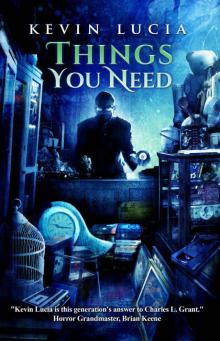 Things You Need
Things You Need A Night At Old Webb
A Night At Old Webb A Brother's Keeper: A Clifton Heights Tale
A Brother's Keeper: A Clifton Heights Tale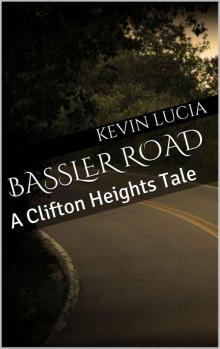 Bassler Road: A Clifton Heights Tale
Bassler Road: A Clifton Heights Tale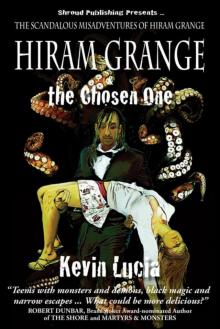 Hiram Grange & The Chosen One
Hiram Grange & The Chosen One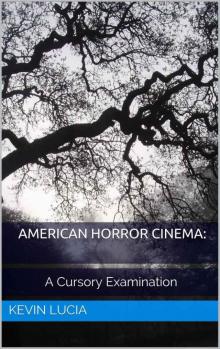 American Horror Cinema
American Horror Cinema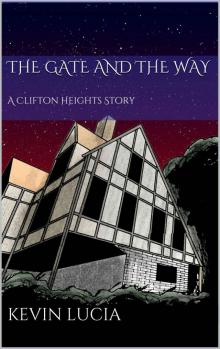 The Gate and the Way: A Clifton Heights Story
The Gate and the Way: A Clifton Heights Story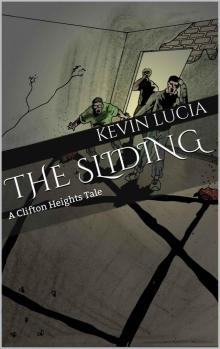 The Sliding: A Clifton Heights Tale
The Sliding: A Clifton Heights Tale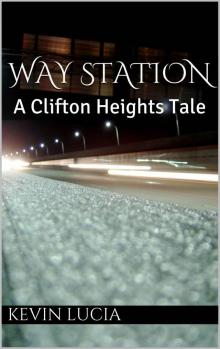 Way Station: A Clifton Heights Tale
Way Station: A Clifton Heights Tale